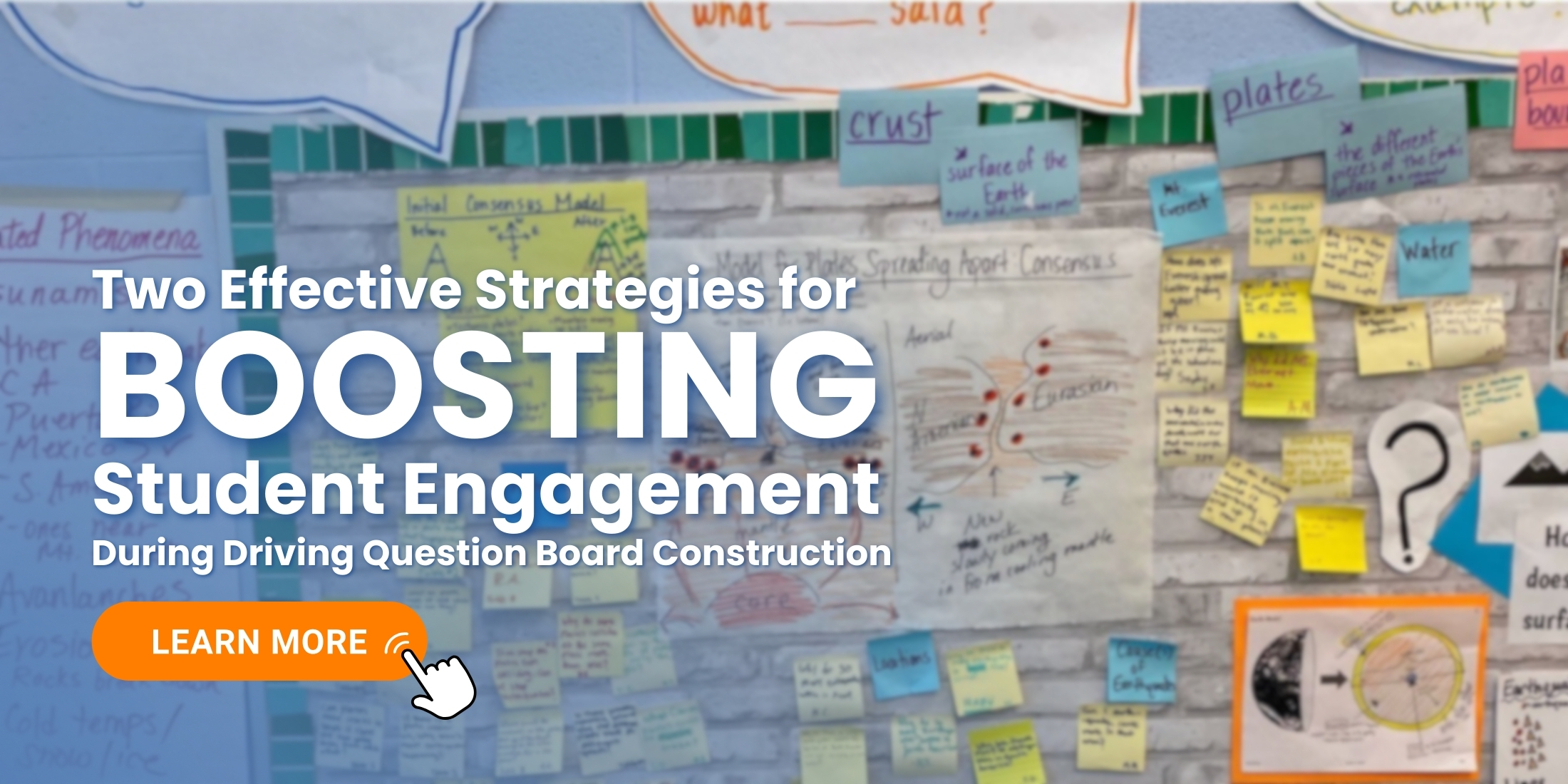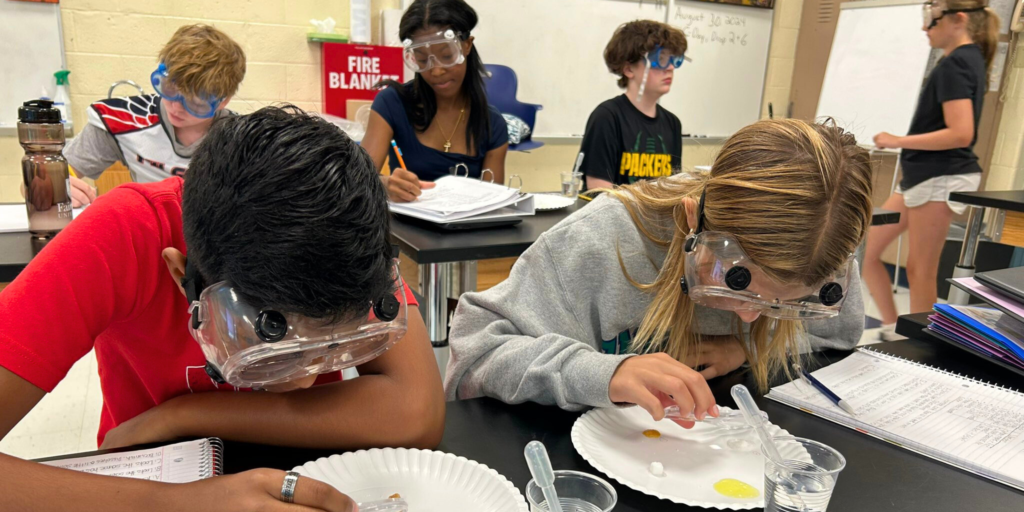OpenSciEd Elementary: A New Era of K–5 Science Education
OpenSciEd Elementary: A New Era of K–5 Science Education

Quick Take: OpenSciEd Elementary is transforming how K-5 students learn science with a curriculum that’s NGSS-aligned, literacy-integrated, and designed for real classroom conditions. From anchoring phenomena to built-in teacher support, OpenSciEd Elementary empowers both students and educators, no science degree required.
In this post, we’ll explore the core features that make OpenSciEd Elementary unique, including its student-driven design, seamless literacy integration, and robust supports that help every teacher feel confident leading science instruction.
Science Curriculum Reimagined
Picture this: a science curriculum that seamlessly integrates both literacy and mathematics, one that instructional designers developed to answer the questions that students naturally are curious about, and one designed with the constraints of an elementary classroom in mind.
As a current fourth-grade teacher, I once thought that was impossible, until I experienced OpenSciEd’s Elementary School Curriculum.
In fall of 2024, OpenSciEd released its first set of K-5 materials, covering topics from energy to ecosystems. These units showcase a three-dimensional, real-world, phenomena-based curriculum that meets modern science education's requirements.
What is OpenSciEd Elementary?
OpenSciEd Elementary is a Next Generation Science Standards (NGSS)-aligned, real-world, phenomena-based science curriculum. Lessons follow a coherent storyline approach that supports learning in all three NGSS dimensions:
- Crosscutting Concepts
- Science and Engineering Practices
- Disciplinary Core Ideas
According to the OpenSciEd Elementary Science Design Specifications:
“Instructional materials provide a coherent path anchored in students’ own experiences and questions to build disciplinary core ideas and crosscutting concepts through an interactive process of questioning, investigating, modeling, and constructing explanations.” (OpenSciEd Elementary Science Design Specifications, page 3)
How OpenSciEd Elementary Units Begin: Phenomena and Driving Questions
Digging a bit deeper into the nuts and bolts of OpenSciEd Elementary, each unit at every grade level sets a stage for learning through the unit with a real-world phenomena, also known as the anchoring phenomena. Anchoring phenomena, something real they can see and experience in their everyday lives, serve as a whole-class shared experience.
Examples include:
- First graders exploring the experience of reading under a blanket in the dark.
- Fourth graders investigating how kicking a soccer ball affects distance.
Anchoring phenomena provide the foundation for developing a driving question. Students will then participate in hands-on activities and investigations designed to answer it, forming the backbone of the curriculum’s storyline approach.
How OpenSciEd Elementary Supports All Teachers
Many of us who identify as ELA or social studies “people” can feel intimidated by topics like anchoring phenomena or crosscutting concepts—let alone teaching science—because we may not feel comfortable teaching science.
OpenSciEd Elementary addresses this challenge head-on. Its teacher materials include embedded supports that build both student and teacher content knowledge, ensuring that every educator feels confident leading science instruction.
Integrated Learning for Students and Teachers
OpenSciEd Elementary weaves educative instructional materials directly into the teacher guides, resources woven directly into the teacher guides that help educators learn alongside their students. These features aren’t extra reading or add-on trainings. They’re built into the core materials so teachers can access them quickly, right when they’re needed.
The Design Specifications explain:
“Educative features are designed to support the wide range of teachers who use the instructional materials and to help teachers find the support they need, when they need it.”
Literacy Integration That Feels Natural
OpenSciEd Elementary integrates ELA skills in a way that feels natural and keeps lessons student-driven. Students in OpenSciEd classrooms get to strengthen their skills in other topic areas. As they move through the unit storyline, students strengthen their reading and writing skills by reviewing scientific texts and learning how to communicate their understanding of the phenomena.
“Instructional materials use the Common Core State Standards for English Language Arts to support and scaffold grade-appropriate uses of literacy skills… and identify necessary scaffolding for the literacy skills needed to engage in scientific argumentation and communication in high school and beyond.” (OpenSciEd Elementary Science Design Specifications, page 85)
Helping Students Ask Questions and Find Answers
Every OpenSciEd Elementary unit encourages students to develop questions based on the anchoring phenomenon. Students work together on investigations and formulate questions that help them make sense of the world around them.
As the Design Specifications state, the goal is to:
“…use literacy practices of reading, writing, speaking, and listening to develop and reinforce important science ideas and practices, while supporting students in strengthening their English language arts.” (OpenSciEd Elementary Science Design Specifications, page 112)
Looking Ahead: Connecting Elementary to Secondary
Over the next two blog posts, we will be discussing how OpenSciEd Elementary lays the foundation for OpenSciEd Middle and High School. We will also discuss OSE Elementary in comparison to OSE High School and Middle School. Lastly, we will discuss what supports and advice districts considering the implementation of OSE elementary may consider.
About the Author: Jacquelyn Tindall
* * * * * * *





